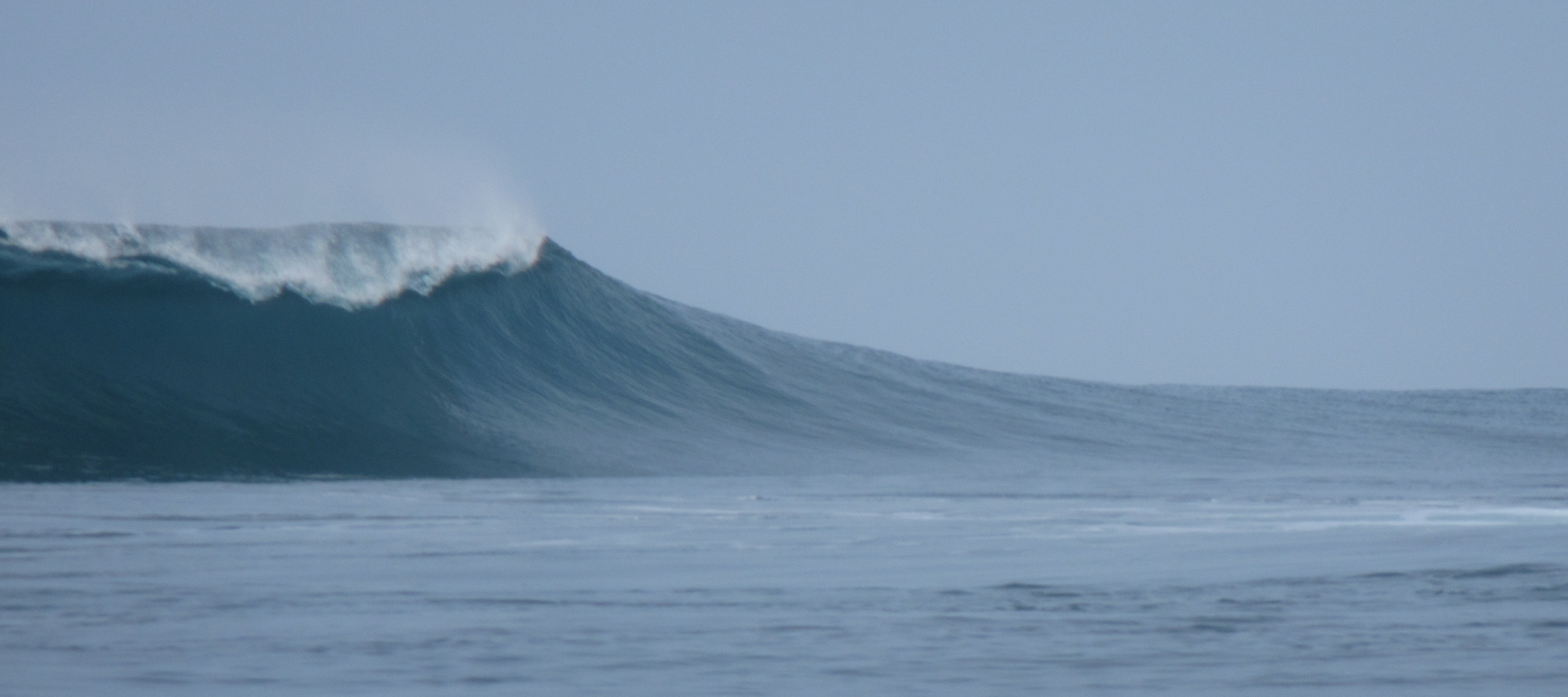Summer, 2014
Watching 1-2ft lines limp across the reef at Lhok Nga, Aceh, Indonesia, wasn't part of the plan. Maybe it would have been okay, or at least bearable, if I was on a long Indo drift, riddled with gutworms and suntanned and feeling slowpaced. Or perhaps it would've been bearable if I knew I was heading back to the brisk mornings and warm water of an east coast autumn. But given my current postcode in Australia's northwest, given the ocean off my closest beach is usually lake-like and threaded with box jellyfish, I was heartbroken.
Luckily Aceh is a place rich in stories and history, the kind of place where first world problems, like getting skunked on your annual leave, are swiftly revealed as irrelevant. The word Aceh, or originally, Atjeh, is actually an acronym. It stands for Arab, Tionghoa (Chinese), Jepang (Japanese), Europa and Hindi, representing the confluence of cultures that gathered, traded and intermarried on Indonesia's most north-western tip, and noticeable in the kaffir lime leaf twist in curries, or the aquiline nose of a village girl. It's no surprise, given this melange of cultures, that the Acehnese saw themselves as different to other Indonesians. For thirty years a civil war raged between the Acehnese independence fighters (GAM) and the Indonesian military (TNI). When the tsunami hit in 2004, killing more than 130,000 Acehnese, it spelled the end of the war. GAM soldiers and TNI soldiers mourned their losses together, buried their dead together, then set about the difficult task of rebuilding their communities.
I travelled to Banda Aceh a couple of years ago for work and was privileged to interview several women who were central in mitigating the impacts of the war either through politics or through grassroots social action. Their stories left me shattered. Terrible stories of rape. Terrible stories of children frightened by the sound of waves because they were reminded of gunshots. Needless to say, my engagement with Aceh this time, as a surf tourist, was much more superficial. But stories about the war and about the tsunami aren't far below the surface. One man lifted his shirt to show me bullet wounds from his time fighting for GAM. "Damai itu indah." Peace is beautiful, he said. This is also the maxim on the signs on street corners. And while this is thankfully true for communities throughout post-tsunami, post-war Aceh, while peace is here and apparently here to stay, the same cannot be said for the burgeoning surf community of Lhok Nga.
Taking those two adjectives in isolation I'd say beautiful, yes. Mountains shear off into the ocean, casuarinas shade the waterfront, the sun sets into the surf through a flume of sea mist. And we stayed with the flamboyant and entertaining Eddie, a doctor-in-training with a habit of singing the Star-Spangled Banner in a truly terrible voice. Eddie's balcony became the spot to sink sludge-like Acehnese coffee, coffee that would have your heart still beating half-panic at 2am. A stones throw from the balcony was a narrow road linking on to a maze of quiet, picturesque lanes. So beautiful, yes, but far from peaceful. With carloads of Brazilians, Aussies and Japanese pouring in, I found myself paddling out at 4.30am to get a few uncrowded waves at The Peak before thirty blokes joined me at seven to hustle for 2ft sets. One afternoon, a mad Spaniard maliciously shoved his board in front of me as I was taking off; the same evening, I heard some local surfers brawled to blood on the beach. No, it was not peaceful. So when a manic-eyed German followed me around Eddie’s, desperate to know where we disappeared one morning with a carload of boards, I told him vaguely, ‘Down south.’ When he pressed me for details, I just shrugged.
These shots give all the detail you need ...







